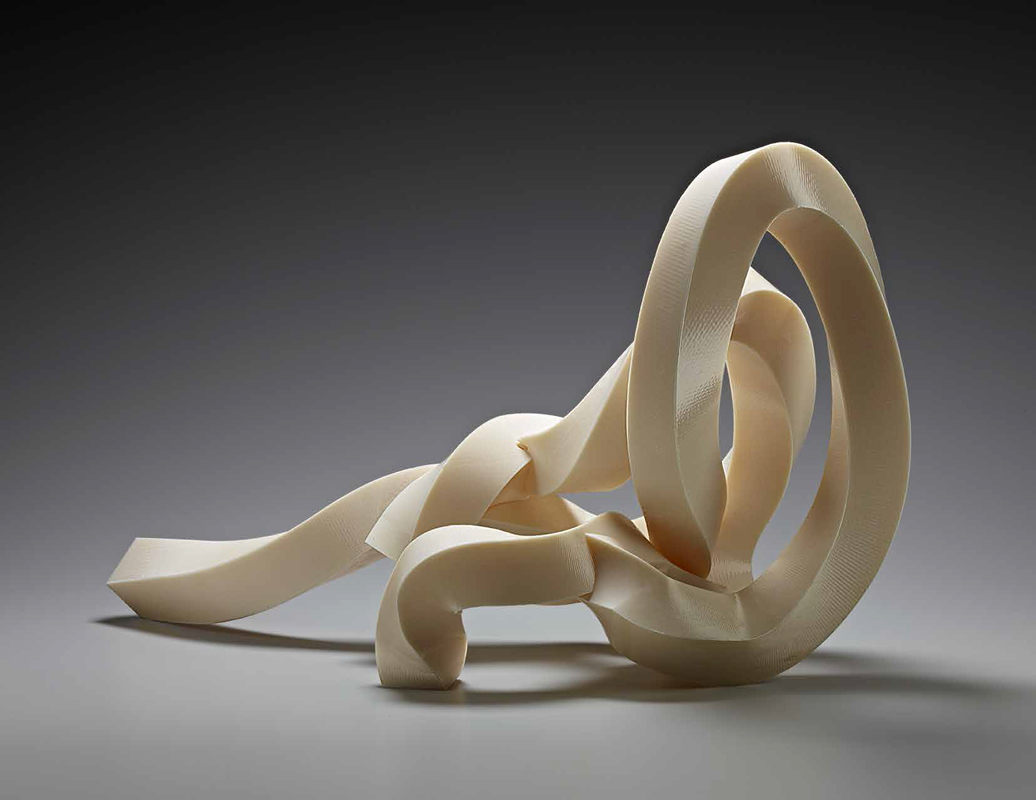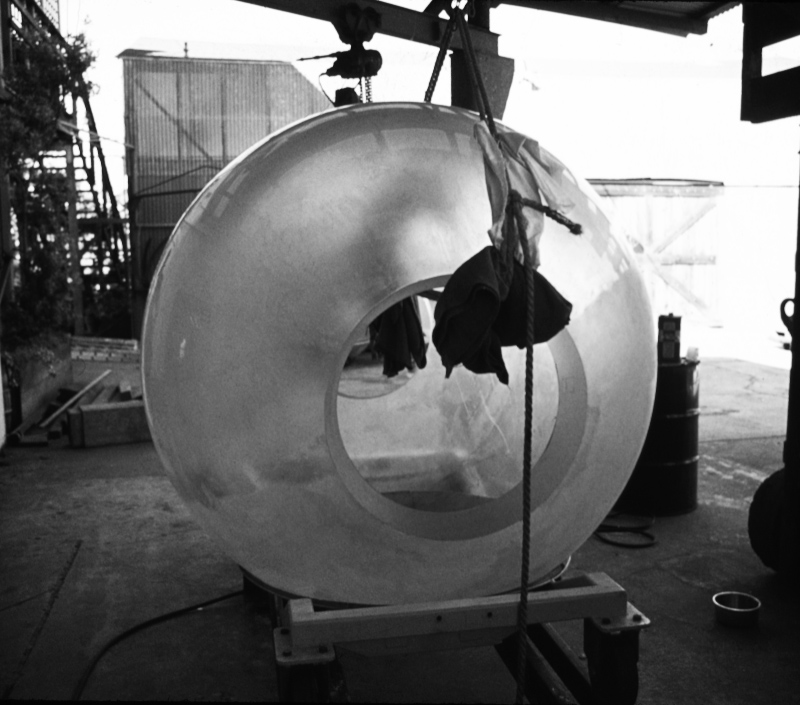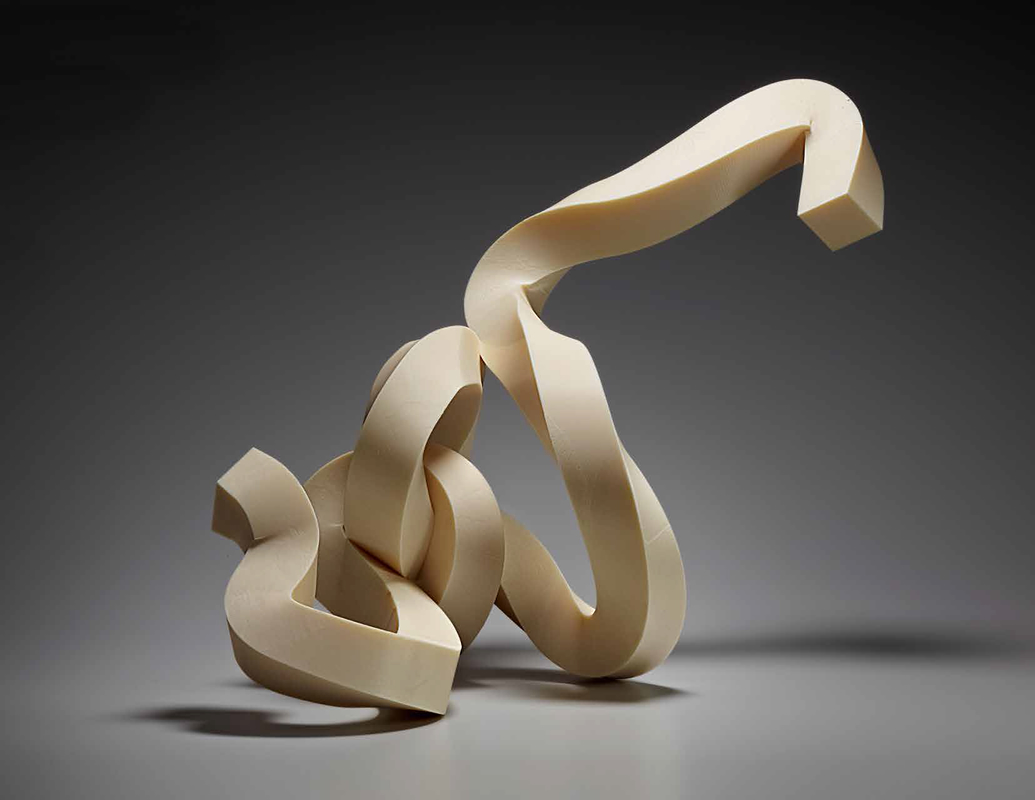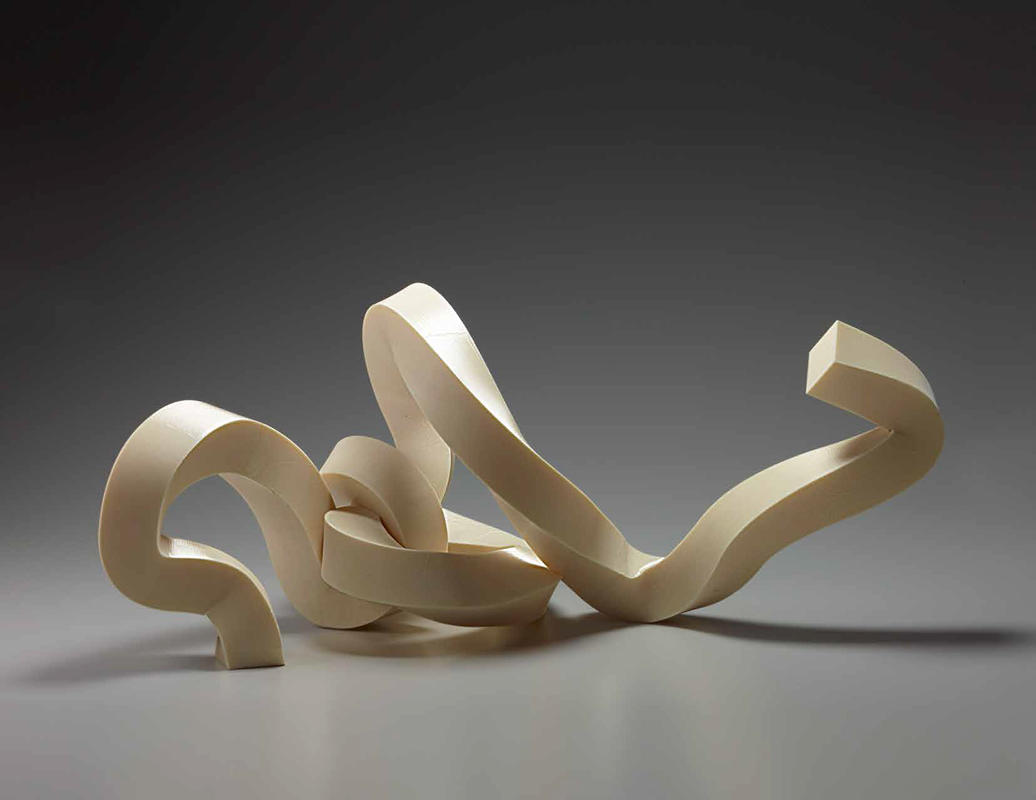“Nature arrives at this perfect point between change and stillness, between form that is evolving and form that is complete; nature does this most easily and with rare mistakes. Nature remains the ideal guide and the great resource; without it, there is no warmth, no heart and I insist that my work have both.” — Bruce Beasley
Bruce Beasley is not only one of America’s most prominent sculptors, he is among the first to incorporate 3D printing methods into his work through his Coriolis Series.

A Brief History:
Bruce Beasley’s first works were welded sculptures made from broken cast iron. In 1961, the New York Museum of Modern Art featured one of his sculptures in an exhibition called The Art of Assemblage. The next year, his assemblage sculpture “Chorus” was acquired by MOMA, making Beasley the youngest artist to have work in the permanent collection.

In 1963, as one of eleven artists to represent the United States at the Biennale de Paris, Bruce was awarded the purchase prize by the French Minister of Culture Andre Malraux.

Beginning in 1968, Bruce successfully created small transparent sculptures in cast acrylic. He wanted to explore transparent cast acrylic at a much larger scale, which experts at Dupont and Rohm & Hass thought impossible. Later on in the same year, Bruce was invited by the State of California to compete against a selected group of sculptors for a commissioned work. The jury had selected Bruce for his work in cast metal, but, due to his then current interest in transparency, proposed a massive cast acrylic sculpture. The jury was skeptical that the sculpture could be completed, but Bruce convinced them otherwise. What he didn’t tell them, was that he needed to invent a whole new process to realize his vision, which he did! Apolymon, a transparent sculpture in cast acrylic won the competition and in 1970 he installed the work in Sacramento.
Bruce continued to be enraptured with cast acrylic for the next ten years. In 1974, Bruce was approached by marine researchers to see if he could use his technique to cast transparent bathyspheres for undersea exploration. He succeeded. Bruce created bathyspheres for Johnson Sea Link submersibles for the Harbor Branch Oceanographic Institute. These submersibles were later deployed to locate the crew compartment of the Space Shuttle Challenger, which tragically disintegrated during liftoff in 1986.

It was a privilege to talk with Bruce before heading to San Francisco, and to see his REAL 2015 presentation about the pioneering work he performed with 3D printing for his Coriolis Series of sculptures.
Andrew: So, how does 3D printing play into your process and work?
Bruce: Well, I decided to make a Coreolis sculpture twice the normal size using existing bronze casting techniques. That meant enlarging the sculpture and then making rubber molds in order to slush cast wax into them. The wax patterns would then be invested and burned out in the traditional lost-wax bronze casting technique. I could not print the enlarged sculpture in multiple parts on my Fortus printer because of the limitation of the build envelope and also because of the high cost of their proprietary materials . Therefore 5-axis milling and rubber molds seemed the only way I could make one of then at twice the size and in a permanent material.
The results were not good. The aesthetic of these sculptures is based on the continuous flow of a sinuous shape that moves though space and folds back through itself. The surfaces and line of the movement must remain continuous and smooth. The wax tended to pull away from the rubber mold, causing a lot of distortion, and the differing thickness of the waxes caused additional problems due to uneven shrinkage in both the wax and the molten bronze. The final cast pieces were not accurate and trying to weld them all together was a nightmare. In addition to being bad quality, it was very expensive. The milling and rubber mold cost $12,000 alone, not counting the cost of the bronze casting itself.

I thought there had to be another way to do this, and I thought the solution might be to eliminate the 5-axis milling and rubber mold entirely by 3D printing the parts that would be invested and burnt out. The print material would need to burn out cleanly like wax does, and be stronger and hold its shape better. In addition, 3D printing would give consistent wall thicknesses, which would save material and reduce shrinkage in the bronze.
To do this would require an affordable printer with a large building envelope and that would print open-source materials and not just a proprietary material like my Stratasys printer. I acquired a Gigabot, with a 2′ x 2′ x 2′ build envelope. Through experimentation, we discovered that PLA, being a corn-based material, burns out cleanly and without toxic fumes. This is a critical factor for the foundries.
Andrew: Did this cut down on costs?
Bruce: Yes. It is a very, very expensive process and subject to all kinds of error because there are distortions that happen in the rubber mold, and the 5-axis milling is very expensive. So, what I realized was, if I could print in a material that would burn out like the wax, I could print the hollow thin sections that are going to be cast in bronze directly, and then they could be burned out directly and I would eliminate the whole step of the 5-axis milling and the rubber mold process.
Andrew: How much would doubling the size of a Coriolis sculpture have cost?
Bruce: To simply do that at twice that size, so it would be 60-inches long and about 27 nches high, the milling and the rubber mold cost $12,000.
Andrew: Wow.
Bruce: That is not the casting, that is just to get to the point where you can cast it.
Andrew: That’s crazy.

Bruce: I’ve made that piece on a large format 3D printer. The casting is 25% lighter. Imagine: you’ve got this big rubber mold and you are pouring wax into it. The wax doesn’t cool evenly; in the little narrow places, it cools faster and, on the larger surfaces, it cools slower, so in order to get a wax that is of the minimum thickness in the flat parts, it builds up way too thick in the corners, so you get a casting that is uneven in thickness, which also increases shrinkage and wastes material. So, by printing on a 3D printer, all the wall sections are exactly the same thickness, so you get a very consistent casting, use about 25% less material, and a more accurate casting because of less shrinkage and the actual printing of the shape is more accurate than the other way so you get a better, more faithful casting, and save $12,000 on doing that piece.
Andrew: Interesting how 3D printing could be used this way.
Bruce: I know; it’s a really major step in bronze casting. It’s really interesting because, as an artist, I’ve been following 3D printing for a long time now and people keep talking about the potential of it, but there are not that many examples of something that is directly saving money, significant money, and making a better existing product. It is not potential anymore, this is actually making something significantly cheaper and better.
Andrew: It is one of the only examples I’ve heard of in the art world. I am sure you have heard of a lot of examples of bringing the price point down in terms of, well, the most common one is prosthetics, which is pretty astounding and makes a huge difference in people’s lives. I actually just wrote up, I’ve written like 12 or 15 different stories about that sort of process and, you know, it is one of those sorts of things that I could just write about forever because it makes such a huge difference to people. I was writing recently about these kids and they were hanging out with the cast of Marvel Universe Live, live action Marvel Universe super heroes, with E-nable, that great organization that does the 3D prints low cost prosthetics. It was awesome, these kids – they feel like they have bionic hands; it reduces embarrassment and shame, which to me, is misplaced and misguided to begin with, but it happens anyway. The kids just feel a million times better because they have something that looks futuristic, bionic sci-fi, or like a superhero.
Bruce: You know that, in fact, is a great example, way better than mine, in terms of actually changing the world, and I think that is terrific. That is absolutely wonderful. So, that is what interests me, not just using it in something that is not just potential anymore, but really changing something existing, making it, and making it better.

Bruce: The other thing about all this talk about how everybody is going to make things, most people don’t know what they want to make.
Andrew: Right! To me, it is really about what skill set you bring to a tool or a machine. It will amplify and mutate your abilities and your desired outcome. Widgets are one thing….
Bruce: But most people don’t want to make widgets at home, they want to buy widgets. My kids are in their late thirties and they have busy lives; they are not going to come home from work and deal with the family and then go off and make a new case for their iPhone. But making a structure that I couldn’t afford to make in bronze and making it better, thinner, cheaper, more accurate, and save $12,000, I mean I just wouldn’t be able to spend that…so that is really liberating.
Andrew: Very interesting, thank you so much for taking the time out to speak with me.
Bruce: Sure, no problem.



